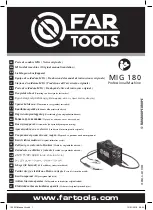
─ 43 ─
No.
Symptom
Cause
Corrective action
2 Water leaks from the
duct pipe.
The pipe guide and duct are not caulked
with silicone with no gap.
If there is a gap, caulk it using silicone.
(Refer to the Installation Manual for the
procedure.)
Condensation occurs around the pipe
guide or in the pipe guide.
Use commercial heat insulation materials
to insulate the duct.
(Refer to the Installation Manual for the
insulation procedure.)
The gradient of the duct pipe is not cor-
rect. (It should be tilted upward for 1/30
or more from outdoors to indoors to pre-
vent rain drops, snow, or mist from enter-
ing the unit.)
Connect the duct correctly.
Rain drops, snow, or mist enters the unit. • Stop the product temporarily in case of
a hard rain, snow, or dense mist.
• Use an outdoor hood which prevents
rain drops or snow from entering the
unit.
[1] Diagnosis of the damper
Failure mode 7
Individual troubleshooting
No.
Symptom
Diagnosis method
Corrective action
1 Damper motor failure
Disassemble the product to see the
damper assembly. (Refer to “11.
Overhauling procedures”.)
Check if the damper operates in the
trial operation mode.
(Refer to “6.7 Trial operation” in the
Installation Manual for details of the
trial operation mode.)
If the damper does not operate, replace
the damper assembly.
2 Damper adhesion
Disassemble the product to see the
damper assembly. (Refer to “11.
Overhauling procedures”.)
Open and close the damper plate man-
ually and check if a foreign substance
is adhered to the damper plate and/or
the damper plate is adhered.
Remove the foreign substance or cause
of adhesion.
















































